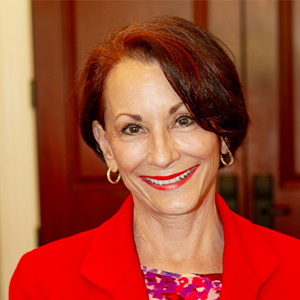If you have been writing grants for a while, you know the plethora of questions funding agencies ask in a nonprofit grant application. Some questions may make you pause and consider if you have a response, while others require leadership approval or staff action. Other questions you may have ready answers for—simply cutting and pasting from organizational materials.
If you are just starting to write grants for your nonprofit, you will quickly learn that the more nonprofit grant applications you complete, the greater the range of questions you will encounter. Whether you are a fledgling or seasoned grant writer, it is paramount to have a compelling story to tell and not be distracted from telling it because of the questions.
Answering Grant Questions While Telling Your Nonprofit’s Story
No two funding agencies will ask the same questions. Each has its own focus and priorities, and your challenge as a grant writer is to answer these questions while ensuring your nonprofit’s story is told. Some grant applications may include questions you find tedious, while others may leave you searching for an answer. Many will contain familiar questions you’ve encountered multiple times. Taken together, these questions offer an opportunity to present your nonprofit’s story from multiple perspectives.
Creating a Core Document for Your Grant Applications
To streamline your grant writing process and minimize frustration, compose a core document that outlines your nonprofit’s story. Leadership should approve this document so that you have a consistent narrative to use across applications. Your nonprofit’s story can be any length, but it should contain the following essential elements:
- The Problem: What community issue is your nonprofit addressing?
- Your Solution: How does your nonprofit’s mission, vision, programs, and partnerships create impact?
- Results and Outcomes: What measurable impact has your nonprofit achieved?
- Nonprofit History: A brief background of your organization.
- Client Demographics: Who you serve and their key characteristics.
- Financials: Budget, funding sources, and financial accountability.
- Attachments: Supporting documents like case statements, logic models, or annual reports.
Defining the Problem Your Nonprofit Addresses
A strong nonprofit grant application starts with a clear description of the problem your community faces and how your nonprofit addresses it. Whether it’s homelessness, food insecurity, or academic failure, grant reviewers want to see data-backed evidence of the issue’s severity and the consequences of inaction. Use statistics from credible sources and client perspectives to strengthen your case.
Presenting Your Nonprofit’s Solution
Your nonprofit’s solution should outline its mission, vision, programs, and strategic partnerships. Funders prefer to invest in nonprofits that complement, rather than duplicate, existing services. Highlight how your nonprofit maximizes community partnerships and leverages volunteers to enrich the client experience.
Additionally, showcasing your nonprofit’s credentials—such as GuideStar ratings, Great Nonprofits badges, or United Way partnerships—demonstrates credibility and trustworthiness.
Showcasing Strategic Planning and Long-Term Commitment
Some funders ask about your nonprofit’s strategic plan to assess long-term sustainability. If your organization does not yet have one, consider working with leadership to develop a plan. Demonstrating a commitment to the mission beyond short-term projects can strengthen your grant applications.
Demonstrating Impact Through Measurable Results
Funders want to see more than activities—they want proof of impact. Your grant application should include:
- Outputs: Number of clients served, services provided, and program reach.
- Outcomes: The impact on clients over time, backed by qualitative and quantitative data.
Using a logic model can help structure this information clearly, outlining inputs, outputs, and expected long-term impact. Additionally, funders may ask how your nonprofit measures success—best practices include gathering feedback from clients, volunteers, and stakeholders.
Understanding the Cost Per Client and Financial Efficiency
A key financial data point in many nonprofit grant applications is the cost per client served. A high cost per client, especially with a low service reach, may be a red flag for funders. Compare your program’s costs with similar organizations to ensure they align with industry standards. Additionally, highlight how funding is allocated, emphasizing that a high percentage goes toward direct services.
Leveraging Client Demographics to Strengthen Your Application
Funders often request demographic details about the communities you serve. While some prefer statistics, others look for narrative descriptions. Use this section to highlight both quantitative data (age, income, location, etc.) and qualitative insights, such as client testimonials that illustrate the personal impact of your programs. Keeping a well-organized database of client demographics ensures you have accurate information readily available.
Using Financial Data to Build Trust with Funders
Financial transparency builds credibility. When sharing financials in your grant application, consider including:
- Growth in revenue over time.
- Changes in funding sources and diversification of revenue.
- Financial processes such as Board-approved budgets, CPA-reviewed statements, and annual audits.
Emphasizing sound financial management assures funders that their investment will be used responsibly.
Using Attachments to Strengthen Your Grant Application
Many funders allow additional attachments to provide a fuller picture of your nonprofit’s work. Consider including:
- Annual Reports: Showcases your impact over time.
- Case Statements: Condenses your nonprofit’s story into a compelling two-page document.
- Client Testimonials: Adds a human element to your application.
- Logic Models: Helps funders visualize program effectiveness.
Final Thoughts: Crafting a Winning Nonprofit Grant Application
A successful nonprofit grant application does more than answer funders’ questions—it tells a compelling story that demonstrates your organization’s impact. By crafting a clear, well-documented narrative, you ensure consistency in your applications and make the grant writing process more efficient. Regularly updating your nonprofit’s story strengthens your ability to communicate your mission and secure funding.
Rather than getting caught up in the complexity of application questions, stay focused on telling a powerful, mission-driven story. The more nonprofit grant applications you write, the better you’ll become at aligning your responses with funders’ priorities while keeping your organization’s identity and goals at the forefront.
Need support with your nonprofit’s grant strategy? Our team can help you craft compelling proposals that align with funders’ priorities and increase your chances of success. Contact us today for a free consultation!






